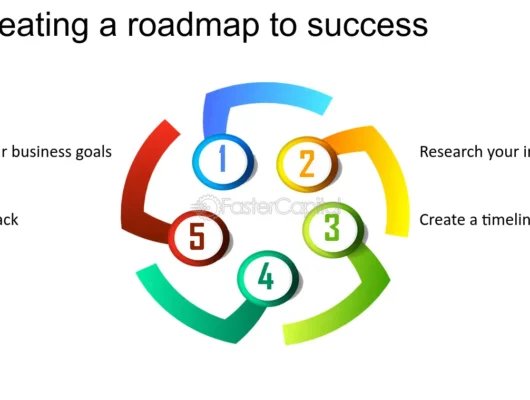In the world of digital marketing, LinkedIn has carved out a unique space as the premier platform for reaching business professionals. With its advanced targeting capabilities and professional user base, LinkedIn Advertising offers unparalleled opportunities for B2B marketers, recruiters, and enterprises aiming to reach a highly engaged audience.
But to truly maximize your return on investment (ROI), it’s crucial to understand the nuances of LinkedIn Advertising. In this article, we’ll explore strategies and best practices to help you create successful LinkedIn ad campaigns.
Section 1: Why Choose LinkedIn Advertising?
LinkedIn’s advertising platform is tailored for businesses looking to connect with professionals. Here’s why LinkedIn should be a key component of your digital marketing strategy:
- Professional Audience: LinkedIn is home to over 900 million professionals, including decision-makers, executives, and influencers across various industries. This makes it an ideal platform for B2B marketing.
- Advanced Targeting: LinkedIn’s robust targeting options allow you to hone in on your ideal audience based on job title, company size, industry, seniority, and more. This precision targeting ensures your ads reach the most relevant users.
- High-Quality Leads: LinkedIn users are often on the platform for professional purposes, meaning they are more likely to engage with content and ads that offer value to their business needs.
Section 2: Setting Up Your LinkedIn Ad Campaign
Creating a successful LinkedIn ad campaign starts with proper planning and setup. Here’s how to get started:
- Define Your Objective: LinkedIn offers several campaign objectives, including brand awareness, website visits, lead generation, and more. Choose an objective that aligns with your overall marketing goals.
- Choose Your Ad Format: LinkedIn offers a variety of ad formats, including Sponsored Content, Sponsored InMail, Text Ads, and Dynamic Ads. Each format has its strengths, so select the one that best fits your campaign objective.
- Sponsored Content: Ideal for promoting articles, videos, and updates in users’ feeds.
- Sponsored InMail: Best for personalized messages sent directly to users’ LinkedIn inboxes.
- Text Ads: Great for straightforward ads that appear on the right-hand column or at the top of the LinkedIn homepage.
- Dynamic Ads: Personalized ads that change based on the viewer’s profile data.
- Target Your Audience: Utilize LinkedIn’s targeting options to define your audience. You can target by location, company, industry, job function, seniority, and more. Consider using LinkedIn’s Matched Audiences feature to retarget website visitors or upload your own contact lists.
- Set Your Budget and Schedule: Determine your daily or total budget and choose between cost-per-click (CPC) or cost-per-impression (CPM) bidding strategies. Set a schedule for your ads, ensuring they run during times when your audience is most active.
Section 3: Crafting Effective LinkedIn Ads
The success of your LinkedIn ads largely depends on the creativity and relevance of your content. Here’s how to craft compelling ads:
- Write a Strong Headline: Your headline should be attention-grabbing and clearly convey the value of your offer. Use action-oriented language to encourage clicks.
- Create Engaging Visuals: Visuals are a critical component of LinkedIn ads. Use high-quality images or videos that align with your brand and message. For Sponsored Content, consider using infographics, explainer videos, or professional images that stand out in the feed.
- Include a Clear Call-to-Action (CTA): Your CTA should guide users on what to do next, whether it’s downloading a whitepaper, signing up for a webinar, or visiting your website. Make the CTA specific and compelling.
- Test Variations: A/B test different versions of your ads to see which headlines, visuals, and CTAs perform best. Continuously optimize based on performance data.
Section 4: Measuring and Optimizing LinkedIn Ad Performance
To ensure you’re getting the most out of your LinkedIn advertising efforts, it’s essential to track and analyze your campaign performance:
- Monitor Key Metrics: Keep an eye on metrics such as click-through rate (CTR), conversion rate, cost per lead (CPL), and engagement rate. These will give you insights into how well your ads are performing and where improvements are needed.
- Use LinkedIn Analytics: LinkedIn provides robust analytics tools that allow you to track the performance of your ads, understand your audience better, and gain insights into what content resonates most with them.
- Optimize Your Campaign: Based on the data, make adjustments to your targeting, ad creative, and bidding strategy. For example, if your CTR is low, you may need to refine your headline or offer. If your CPL is too high, consider adjusting your targeting or bidding strategy.
- Retargeting and Nurturing: Use LinkedIn’s Matched Audiences to retarget users who have previously engaged with your content or visited your website. This can help you nurture leads and move them further down the sales funnel.
Section 5: Case Studies and Success Stories
To provide context and inspiration, consider including examples of companies that have successfully leveraged LinkedIn Advertising.
Highlight their strategies, the ad formats they used, and the results they achieved. This section can be particularly compelling if you can showcase a variety of industries and objectives.
Conclusion
LinkedIn Advertising offers a powerful way to reach and engage with a professional audience, driving high-quality leads and significant ROI.
By carefully planning your campaigns, crafting compelling ads, and continuously optimizing based on performance data, you can unlock the full potential of LinkedIn Advertising.
Whether you’re new to LinkedIn ads or looking to enhance your current strategy, these tips will help you achieve your marketing goals and grow your business on LinkedIn.






